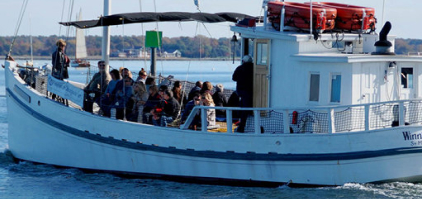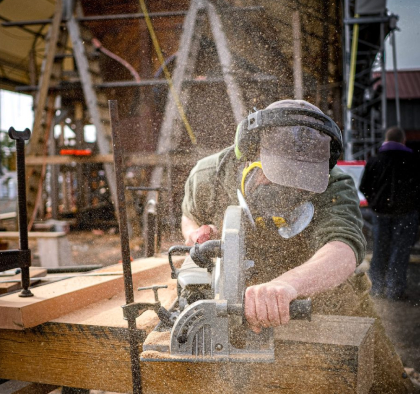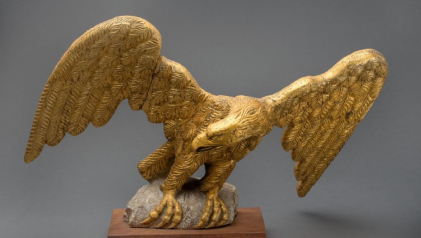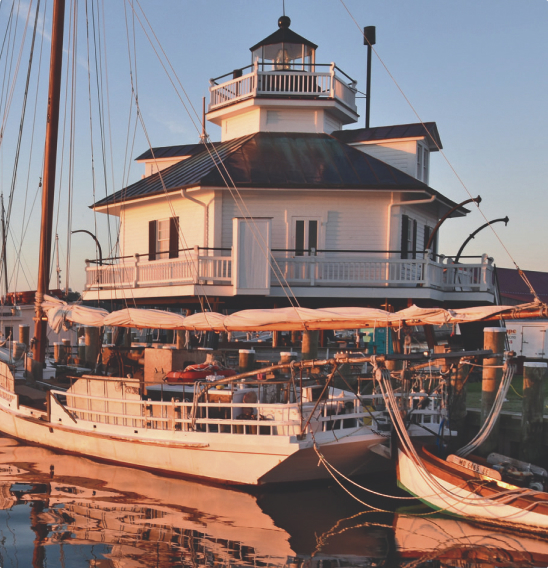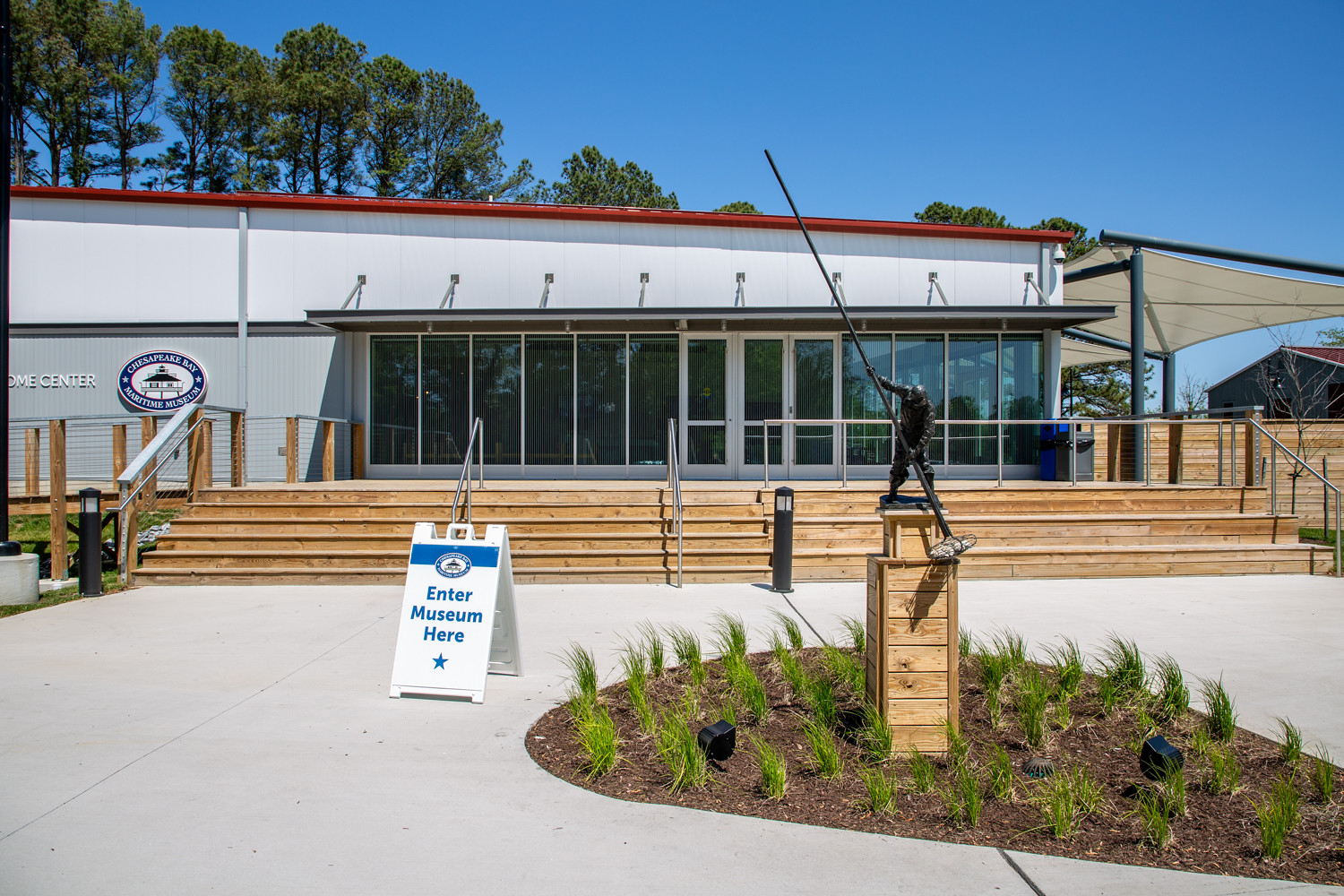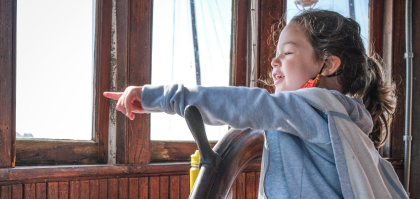Rosie Parks, a skipjack, is an example of Maryland’s state boat, once part of the last commercial fishing fleet under sail in the United States. In 2002, the National Trust for Historic Preservation designated skipjacks were designated as one of America’s Eleven Most Endangered Places. Designed specifically for dredging up the vast quantities of oysters found on the Bay’s floor, only a handful of skipjacks continue to work the Bay.
The celebrated Dorchester County boatbuilder Bronza Parks built Rosie Parks in Wingate, Maryland, side-by-side with two other skipjacks, Martha Lewis and Lady Katie, as part of the last wave of skipjack construction in the decade after World War II. Bronza’s brother, Captain Orville Parks was a waterman who owned Rosie and named the vessel after their mother. Captain Orville took immense pride in his boat and raced it in the annual skipjack races at Deal Island and Sandy Point, winning more often than any of his rivals. He worked Rosie every year until his health forced him to sell the boat to the CBMM in 1975; he died less than a year later. “I know I can’t quit. I couldn’t lay home with these boats out in the river. When I quit, I’m going to move away from Cambridge so I can’t see the dredge boats,” Captain Parks said in 1967.
Built: 1955, Wingate, Md., by Bronza Parks
Length: 51 ft. (15.5 m)
Beam: 16 ft., 7 in. (5.09 m)
Rosie Parks, skipjack, 1955. Collection of the Chesapeake Bay Maritime Museum, St. Michaels, Md. 1975.0053.0001.
